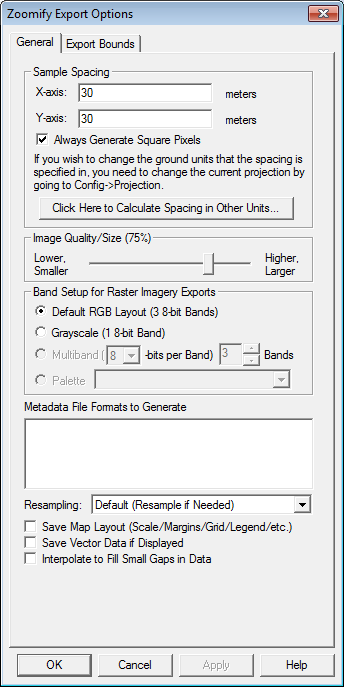
#Photoshop export zoomify full
A shrunk-down version won’t show off the full detail, but a high-resolution one won’t fit comfortably in a browser window. I've been using SVT in my open world project heavily lately and noticed that SVT is not always the answer but helps smooth out many things.Sharing large images on the web can be tricky. SVT functions like its own species, it determines and tries its best but you can't really control it. Not only will the performance benefits of SVT can't be leveraged but also, you can't really control mip maps in SVT, which means high res will still be streamed in given enough time even when you have zoomed out. Now, in your case, you want to navigate a google map like area (flat surface i assume), then you may rather use texture streaming rather than SVT. The occluded areas (boxes covering parts of boxes, the hind etc.) are not sent to GPU. I simplified the things a bit, but SVT will benefit more if there are many boxes in a room all with different textures of 4k+ textures. For example, if you use SVT on a flat wall, chances are you won't be getting a lot performance boost.īut if you use it on a box, then the 3 sides that are not visible will not be streamed to GPU - essentially halving the texture sent to GPU. Now, SVT is useful as long as the textures are not fully visible all the time. This essentially reduces total GPU texture with some CPU overhead. How SVT does it, is that it will create a separate tiled instance cache in the RAM and then send tiles that are visible to GPU. See, the point of SVT, is to allow devs to use high resolution textures without getting the texture pipeline clogged up. I think you almost have the idea of SVT but not quite.

Is that a reasonable/efficient idea or am I misunderstanding how SVT's work and could do something more efficient? I will then snap the quads together to make a really long image that can be panned and zoomed. My plan is to make 20 materials, with a tile in each offset to show only half of the image. In my case, I found the most efficient scheme was to create 10 8K textures, where the image is tiled vertically twice. After I created the shader, it seems to me that the Virtual Texture layers are meant for things like normal maps, specular maps, etc.

It suggests that it's best to write a shadergraph that uses all of the tiles, rather than using several different instances of the shader. I'm a little confused as to the advice given in the Unity reference. I'm curious if it has less evidence of tiling (you can clearly see the 256k tiles loading as you navigate a StoryMap image). It sounds like basically SVT is doing the same tiling idea, but on the GPU and without having to manually cut up the image. I'd like to compare the performance to Unity's Streaming Virtual Texture (SVT). The lowres, images show up first, and then the tiles start to load as they come off the server. This created about 19,000 256px square tiles and also a few low res images of the entire image.


To use it, you need to generate tiles from the image by using a Zoomify export in Photoshop an upload to a web server. StoryMap is quite similar to what I'd like to do in terms of navigation and it works well. I am trying to design an application to navigate a 180,000px wide by 5000px 'gigapixel' image, that allows jumping to specific points and manually panning and zooming the image. I posted this in the 2D forum, but after more research I'm reposting here since this is a HDRP feature only.


 0 kommentar(er)
0 kommentar(er)
